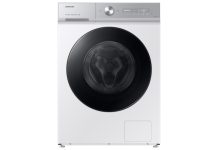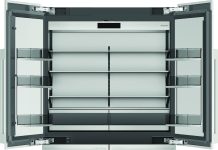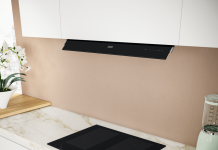Genius is the new toothbrush by Oral-B that connects to the smartphone via Bluetooth. Thanks to the forefront components byf STMicroelectronics, the appliance can offer innovative functions like the position detection and the control of the pressure exerted on teeth.
Digital technologies and forefront components are changing the performances of the most common household appliances, offering unconceivable possibilities until few years ago. It is the case of the connected toothbrush Genius by Oral-B, which integrates an accelerometer and a low energy-consumption microcontroller by STMicroelectronics. Among its most innovative characteristics, the toothbrush has the capability of connecting to the smartphone through an apposite app and of enabling functions such as the position detection, the control of the pressure exerted on teeth and the timer that warns when the suggested brushing time has elapsed. All that to allow end-users to take care of their dental hygiene easily and in the most correct manner. The experience of ST in the sensor ambit has played a significant role for the toothbrush implementation. “We can develop sensors that measure magnitudes linked with the motion – explains Luca Fontanella, product marketing manager of the MEMS Sensor division of ST – and, in particular, since 2004 we have marketed the accelerometers, i.e. devices that measure the linear acceleration on the three axes of the space (X, Y, Z). The accelerometer equipping Genius toothbrush allows estimating its position, starting from the acceleration measurement, because acceleration and position are mutually connected magnitudes. Once carried out such measurement, our eight-bit STM8 microcontroller performs a series of data processing from which the speed is derived and the toothbrush position estimated, unique characteristic for a product of this kind”. ST has supported Oral-B since the appliance development phase, providing the algorithms that allow shifting from acceleration measurements to the estimate of the object speed and position. The position detection is important because it permits end users to verify whether they have executed a good mouth cleaning, without neglecting any zone. Connecting Genius via Bluetooth to the smartphone and positioning the phone on the bathroom mirror with an apposite accessory, the app guides users during the teeth washing. A six-segment scheme reproduces on the phone screen the 6 zones of the mouth. As we proceed with the toothbrush, the scheme visually highlights the areas that have been brushed and that progressively change colour. When all light blue areas have disappeared, it means that the mouth has been cleaned correctly.
Concerning instead the pressure control, this is made possible by the measurement of the vibrations emitted by the toothbrush. “When the toothbrush is switched on but it is in contact with teeth, – underlines Luca Fontanella – also the vibrations produced by the system are measured by the accelerometer and radically change compared to the case in which the toothbrush is instead in contact with teeth. Concretely, it is more difficult for the appliance motor to turn the head when the toothbrush acts on teeth: the accelerometer detects all that and through these measurements it is possible to estimate the pressure”.
The accelerometer use inside Genius was enabled by the miniaturization level reached, too. “Our accelerometers – ends Fontanella – have evolved from their sizes in 2004 (23 mm2) to today’s 4 mm2”.






